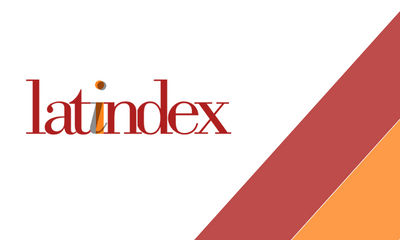Promotion of the teaching of the language of the white cane to road users in the city of yaounde
DOI:
https://doi.org/10.32870/vel.vi18.164Keywords:
Blind, Didactic, Language, Visually impaired, Inclusive societyAbstract
The Cameroonian government, in tune with the international community, is working to promote an inclusive society, through the mentoring and promotion of the blind and visually impaired. However, it is a pitty that these people remain marginalized, misunderstood by others, making any form of interaction between them difficult. Hence the interest of this work, which aims to a reflection on the promotion of the appropriation by road users of the city of Yaoundé, of the language of the blind and visually impaired for better daily interaction within the framework of their mobility. This work was carried out thanks to observation, interviews, questionnaire survey and documentary research, the results of which show that the mobility of the visually impaired is not easy because of backward behavior and lack of interest from able-bodied people. Proposals for better synergy have been made.
Downloads
Metrics
References
AMAM. (2019). La canne blanche. In https://www.amam-myopie.fr. Consulté le 15 avril 2021.
Azéma, B. (1999). « La personne handicapée, l’associatif et le politique : esquisse d’une géopolitique du handicap en France », Hérodote, 92 : 161 185.
Bailly, C. (1990). « Les débuts de la canne blanche ». L'auxiliaire des aveugles.
Extrait de https://fr.wikipedia.org
Blatgé, M. « Apprendre et mettre en scène la déficience visuelle », Journal des anthropologues [En ligne], 112-113 | 2008, mis en ligne le 01 janvier 2008, consulté le 29 juin 2019. URL : http://journals.openedition.org/jda/803 ; DOI : https://doi.org/10.4000/jda.803
Cameroun. (1998). Loi N°98/004 du 14 Avril 1998 d’orientation de l’éducation au Cameroun.
Cameroun. (2010). Loi n°002/2010 du 13 avril 2010 portant protection et promotion des personnes handicapées.
De Saussure, F. (1916). Cours de linguistique générale. Texte établi par Charles Bally, Albert Sechehaye et Albert Riedlinger, Payot, 1971.
De Saussure, F. (2002). Écrits de linguistique générale, établis et édités par Simon Bouquet et Rudolf Engler (avec la collaboration d'Antoinette Weil), Paris, Gallimard,
Ebersold, S. Evans, P, (2003), Les étudiants handicapés de l’enseignement supérieur, OCDE, CERI.
Hébert, L. (2006). « Les structures du signe. Le signe selon Klinkenberg », dans Louis Hébert (dir.), Signo [en ligne], Rimouski (Québec), http://www.signosemio.com/klinkenberg/structures-du-signe.asp
Kamga, H. et al, (2003), Les Droits des Personnes Handicapées au Cameroun. Collection le Guide @ Editions Consaf.
Levi Strauss, C. (1949). Les Structures élémentaires de la parenté. Paris, Presses Universitaires de France
Ligue braille. (2018). La canne blanche : autonomie et sécurité. In https://www.braille.be. Consulté le 15 avril 2021.
Martinet, A. (1960). Eléments de linguistique générale, A. Colin. Paris
Prieto, L. J. (1972). Messages et signaux, Paris, P.U.F.
Rogers, E. (1995). Diffusion of innovation. Free Press. New York, 4th edition.
Rompré, D. (2000), La sociologie, une question de vision, l’Harmattan, Presses de l’Université de Laval.
Saliha Aitouazzou Djamila Fourali, (2016). Conception et réalisation d’une canne intelligente. Mémoire de Master. Université de Mouloud Mammeri de Tizi-Ouzou. Algérie.
Tchinda, G.M. (2017). Canne blanche: un outil de communication peu connu Journal Mutations. N°2444. http://quotidienmutations.cm
Zaltman, G., Duncan, R., Holbeck, J. (1973). Innovation and organizations. John Wiley.

Downloads
Published
Versions
- 2024-11-08 (2)
- 2022-06-21 (1)






